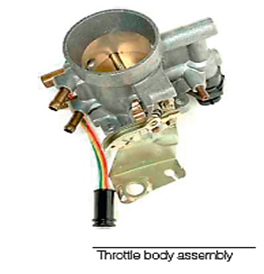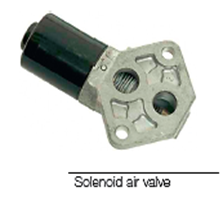←
Automobile Engineering
Air Supply
Introduction:
The air supply components consist of ducting and silencing components between the air intake and the inlet manifolds. This will also include an air filter, a throttle body, throttle plate assembly and idle control components. Stepper motors are also used to control idle speed and give graduated positions depending on the supply current to a number of electric windings.
Air supply:

- The air supply components must provide sufficient clean air for all operating conditions.
- The air flow into the engine would be noisy and unbalanced between cylinders without the use of resonators and plenum chambers.
- A plenum chamber is a large volume air chamber that can be fitted either in front of or behind the throttle plate housing.
- Air filters on most modern petrol (gasoline) engine vehicles consist of a plastic casing with a paper filter element.
- Air flow into the filter is upwards so that dust and dirt particles drop into the dust chamber, or rotary so that dust and dirt are thrown out before the air enters the engine.
- Crankcase ventilation and the air supply or pulse air exhaust emission systems are also connected to the filter assembly.
- The throttle is a conventional circular plate in an air tube

- For fast idle and warm up, an auxiliary air valve is fitted to bypass the throttle plate, or an electromechanical link is made to the throttle plate spindle.
- An auxiliary air valve, idle air control (IAC) or idle speed control (ISC) valve is operated from signals from the ECM. The auxiliary air valve is often a rotary air valve.
- This has a special electric motor to move and hold the valve in position. The position is based on the electrical signals supplied by the ECU.
- Two electric windings in the motor work in opposition to each other so that the motor is variable over a 90° arc.
- Other designs have graduated opening values based on the signal supplied from the ECU. This type consists of a solenoid valve with a spring-loaded armature connected to the valve in the air channel.
- All idle control valves operate to hold the engine speed to the stored data specification for engine temperature and load conditions.
- Stepper motors are also used to control idle speed and give graduated positions depending on the supply current to a number of electric windings.
- Sensors in the idle control mechanisms provide feedback signals to the ECU to provide data on operation and position.